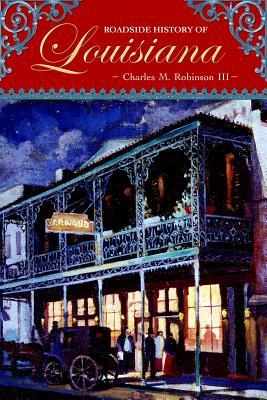
You can almost smell the jambalaya as we tour the Cajun country, learning how the Acadians adapted to their new southern environment after Le Grand Derangement, the tragic expulsion of the Acadians from Nova Scotia in 1755. And you can almost feel the beat of the drums in New Orlean's Congo Square, where slaves once gathered to dance. With insight and warmth, Charles M. Robinson III follows the ups and downs of this great southern state, from the optimism of early settlers to the struggles of the Civil War, from the joy of the Mardi Gras to the horror of Hurricane Katrina.
Like the other books in this highly regarded series, Roadside History of Louisiana is divided into six regions, following highways and scenic byways through small towns and urban centers, enlightening both residents and visitors. Numerous historical photographs and maps enhance this delightful guide to the history of the Pelican State.
You can almost smell the jambalaya as we tour the Cajun country, learning how the Acadians adapted to their new southern environment after Le Grand Derangement, the tragic expulsion of the Acadians from Nova Scotia in 1755. And you can almost feel the beat of the drums in New Orlean's Congo Square, where slaves once gathered to dance. With insight and warmth, Charles M. Robinson III follows the ups and downs of this great southern state, from the optimism of early settlers to the struggles of the Civil War, from the joy of the Mardi Gras to the horror of Hurricane Katrina.
Like the other books in this highly regarded series, Roadside History of Louisiana is divided into six regions, following highways and scenic byways through small towns and urban centers, enlightening both residents and visitors. Numerous historical photographs and maps enhance this delightful guide to the history of the Pelican State.
Paperback
$20.00